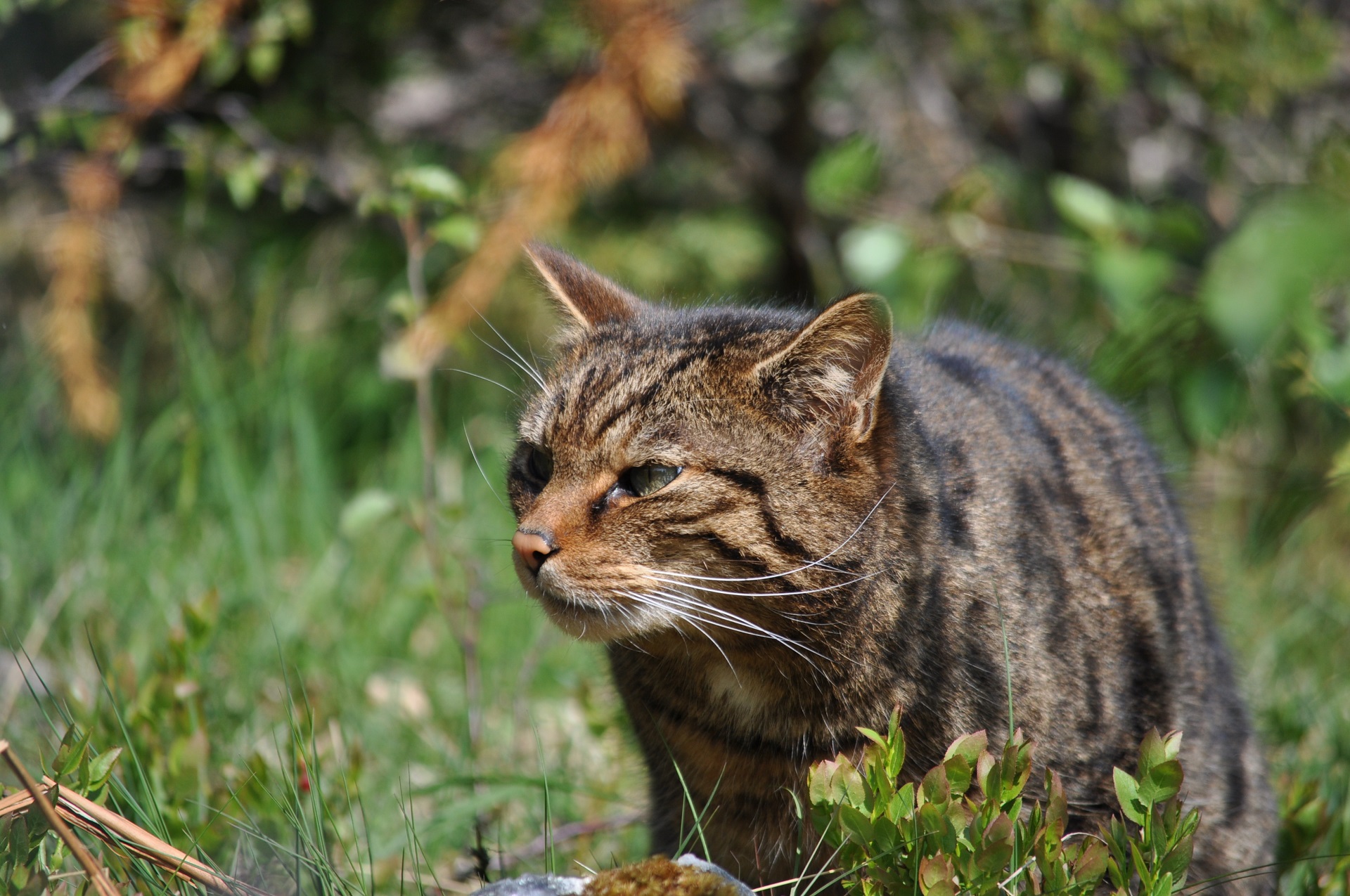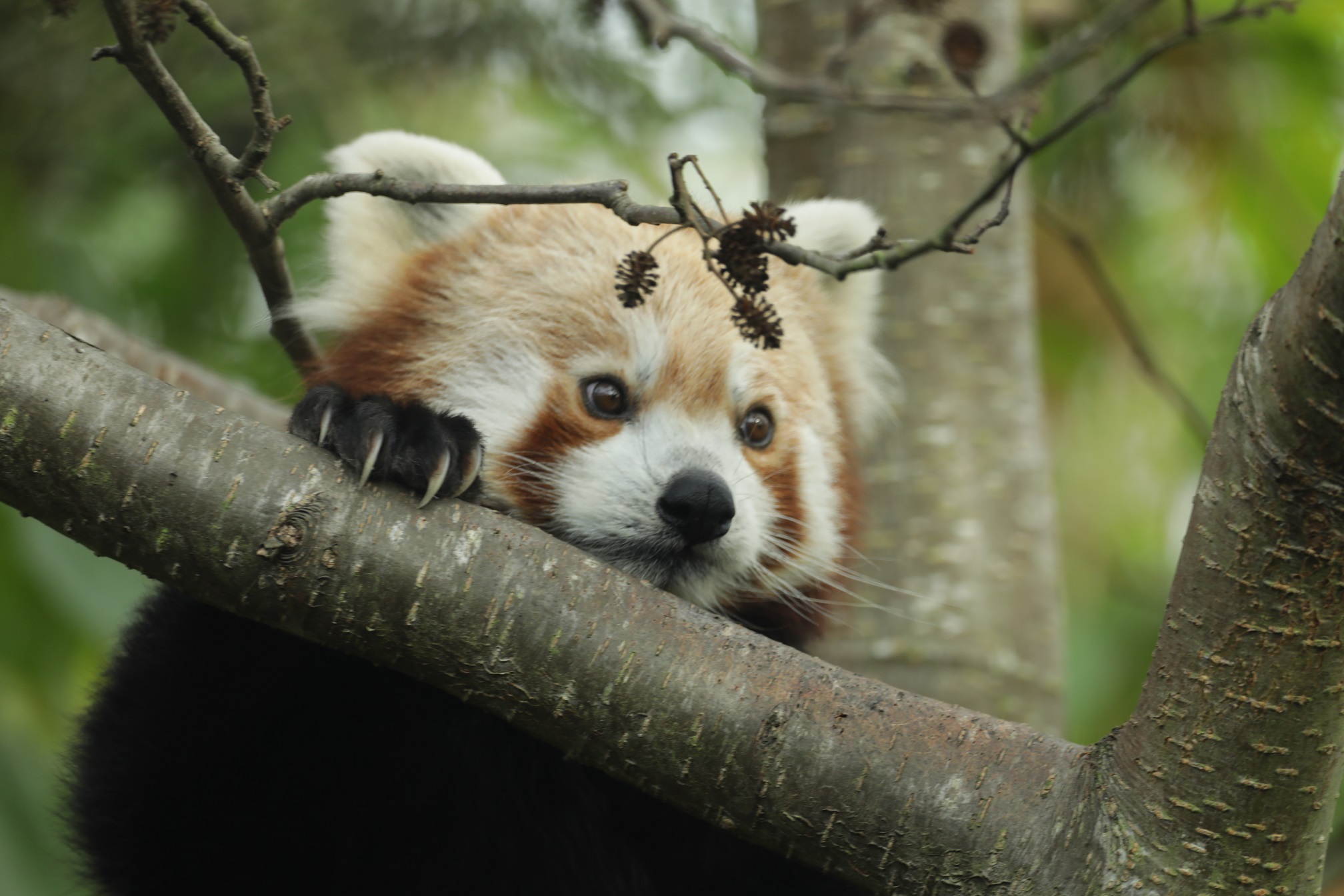Help us fill out our Saving Wildcats Community Survey!
Posted 30 Jul 2024

One year on from the first ever wildcat releases in the Cairngorms National Park, the Saving Wildcats partnership project, lead by the Royal Zoological Society of Scotland (RZSS), wants to hear your views about wildcat restoration in Scotland.
Since the releases occurred last summer, the partnership has had a busy year. Activities of note include tracking released wildcats using GPS-radio collars, recollaring some of the released wildcats to continue monitoring them and continuing to breed and prepare the wildcats for a challenging life in the wild in our off-show conservation breeding for release centre (CBRC) at RZSS Highland Wildlife Park.
Following extensive health checks by the project’s experienced veterinary team, 19 wildcats were fitted with GPS-radio collars and released at several locations in Cairngorms Connect last year. We used what is known as a ‘soft release’ approach, which includes an acclimatisation period in the animal’s intended release habitat. This involved moving wildcats from the CBRC into enclosures within Cairngorms Connect temporarily before their eventual release.
We began tracking the movement of the wildcats every day. The GPS data collected by the collars has revealed many new insights into the behaviour and ecology of the released cats, particularly their activity patterns and habitat use. Daily tracking has also allowed us to monitor the welfare and condition of the cats. By watching their activity and placing camera-traps in the local area, we have been able to view valuable footage of the wildcats exploring their new homes. The data has also allowed us to keep local landowners and managers up to date with their locations, to help mitigate any potential risks.
In late May 2024, we were delighted to finally have confirmation of an incredible project milestone when the first wild-born wildcat kittens were recorded on trail cameras.
While it is hoped that the kittens born to released female wildcats have been fathered by one of the male wildcats that was also released last year, there is always a risk of interbreeding (hybridisation) between wildcats and domestic cats, and it will take time before we can safely get a DNA profile from these kittens to confirm their genetics.
We continue to work to address the threat of interbreeding (hybridisation) and disease transmission from domestic cats in the wider release site, working alongside Strathspey Cats Protection to monitor the wild-living cat population, encourage responsible cat ownership, and carry out Trap-Neuter-Vaccinate-Return of feral cats.
To reduce the threat of hybridisation, we are looking to learn more about domestic cat ownership and feral cat presence within the local area and we need your help. We would love for you to fill out a survey for us (whether you own a pet cat or not!) to help us understand more about the environment that we have released wildcats into. It’s also an opportunity for you to tell us how you feel about our work so far, and to provide us with any feedback you may have.
You’ll also have the opportunity to enter into a draw to win tickets for your family to visit Highland Wildlife Park, or to have a behind-the-scenes Polar bear experience! To fill out the survey, visit bit.ly/savingwildcatscommunitysurvey2024.
Helena Parsons
Saving Wildcats Outreach and Engagement Manager

